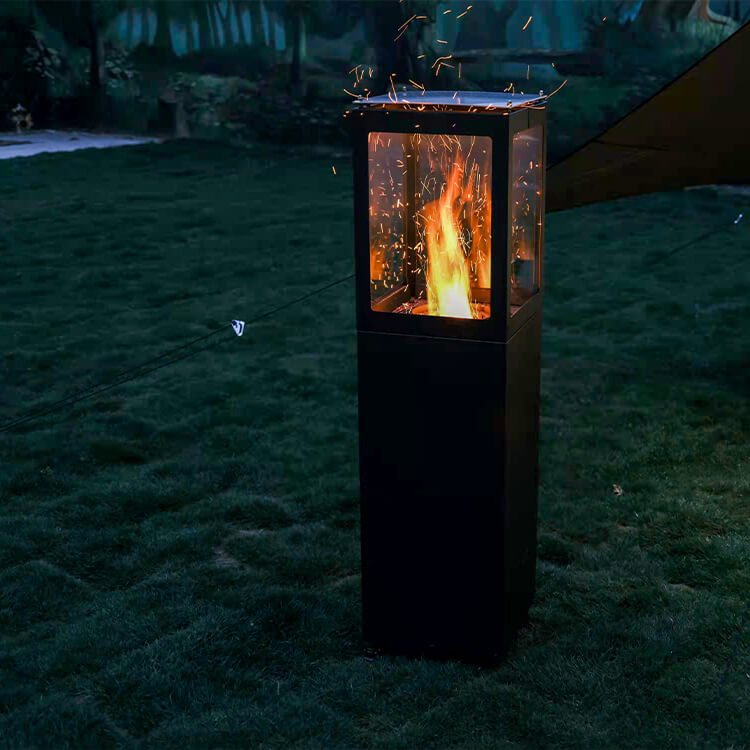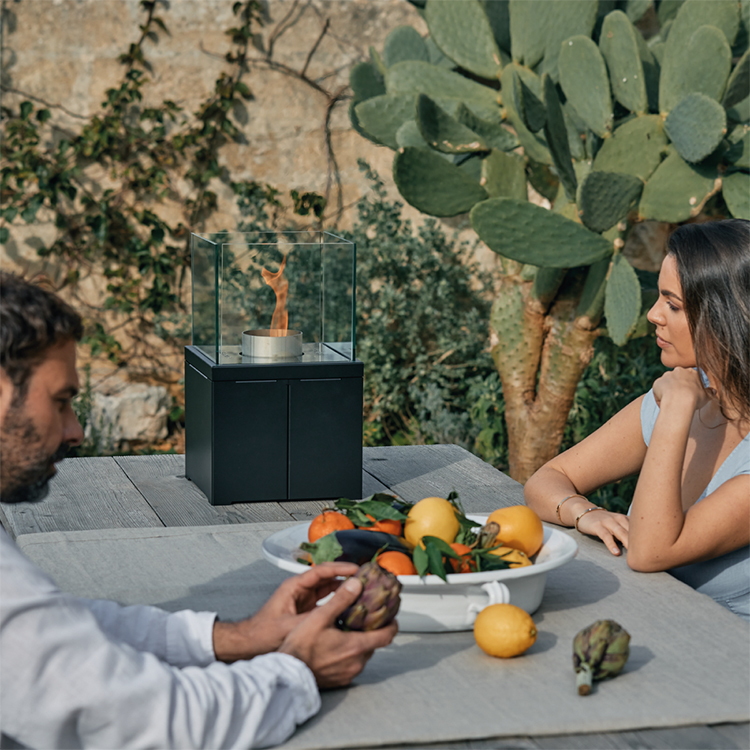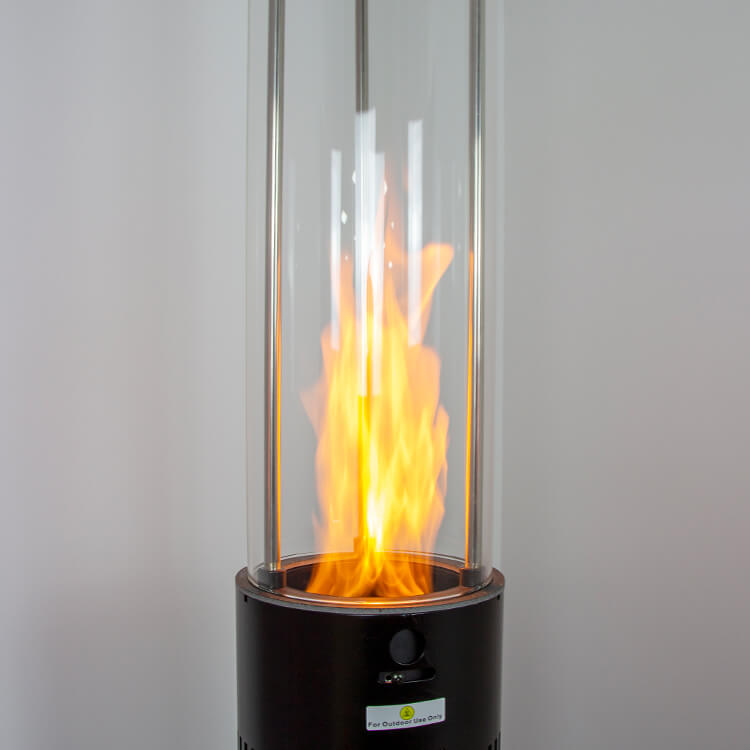Outdoor living has become increasingly popular, and for good reason. The ability to enjoy your patio or backyard year-round is a luxury that many homeowners appreciate. However, as the temperatures drop, staying warm becomes a challenge. This is where patio heaters come to the rescue, providing a cozy and inviting atmosphere for outdoor gatherings.
Enjoying the backyard all year long is doable with a gas-powered patio heater. We've tested the best patio heaters so you can warm your loins this winter.
Best Propane Patio Heaters
Propane patio heaters provide a portable heating solution.They are excellent for larger outdoor spaces and offer a significant amount of heat.Propane heaters often come with adjustable settings, allowing users to control the intensity of the warmth.
Propane Patio Heater offe
rs a simple and elegant solution to keep you warm in your patio or garden all year round. The heater is of very high quality and has a steel construction for easy installation. This Propane Patio Heater is perfect for dinner parties, family gatherings, gardens, backyards, restaurants, coffee shops, schools or any other outdoor event. It keeps your backyard well gathered on cold days as it will give off the perfect amount of heat to keep your patio warm.
Best pyramid patio heater
Pyramid Patio Heater is traditional outdoor heater, most Pyramid Patio Heater are used the propane gas to produce heat. The pyramid patio heater can keep you and your guests warm and allow you to stay outdoors for longer. A pyramid patio heater is, in essence, the same as a normal shaped gas patio heater although it has a pyramid or protruding cone shape. Wider at the bottom of the patio heater structure and gradually becoming a point towards the top end of the heater, hence the name pyramid.
Best Pellet Patio Heaters
Best Fire Pits
When choosing the best patio heater overall, consider the following factors:
Type of Heater:
Propane Patio Heaters:
These are popular for their convenience and mobility.
Electric Patio Heaters:
They are easy to use and require a power source.
Heat Output:
Check the BTU (British Thermal Unit) rating for propane heaters or the wattage for electric heaters. Higher values typically mean more heat output.
Safety Features:
Look for safety features like tip-over switches, auto-shutoff mechanisms, and protective grills.
Build Quality:
Choose a patio heater with durable and weather-resistant materials, especially if you live in an area with varying weather conditions.
Design and Aesthetics:
Consider the design and aesthetics of the heater to ensure it complements your outdoor space.
Ease of Use:
Opt for a heater that is easy to assemble, operate, and maintain.
How we tested patio heaters
Heat Output Measurement
To assess the heating capability, we measured the BTU output of each patio heater across different settings. This allowed us to determine the effective range and warmth provided, ensuring that the heaters met the promises outlined by manufacturers.
Heating Uniformity
We tested how evenly each patio heater distributed heat in a defined space. This ensures that users experience consistent warmth, preventing any uncomfortable cold spots during chilly evenings.
Fuel Efficiency Assessment
Runtime Analysis
For propane and natural gas patio heaters, we conducted runtime tests to evaluate how long each unit could provide heat on a full tank or gas line. This data is crucial for users looking to optimize fuel consumption and minimize refueling frequency.
Adjustable Settings Evaluation
We examined the effectiveness of adjustable settings in electric and propane patio heaters. This includes assessing the ability to control heat intensity, providing users with the flexibility to tailor warmth according to their preferences.
Safety Features Inspection
Tip-Over Switch
To ensure user safety, we tested the tip-over switch functionality. Patio heaters equipped with this feature automatically shut off when tipped, preventing accidents and potential fire hazards.
Protective Grills Examination
We evaluated the protective grills of each patio heater to ensure they effectively shield users from direct contact with heating elements. This is especially important for families with children and pets.
Ease of Use Assessment
Assembly Process
We assessed the ease of assembly for each patio heater, considering user-friendly instructions and the time required to set up the unit. A straightforward assembly process is essential for a hassle-free user experience.
Portability Testing
For portable heaters, we evaluated their ease of movement and storage. This includes examining the weight, presence of wheels, and overall design for convenient transportation.
Patio heater FAQ
How do I determine the right size of patio heater for my space?
To find the right size, consider the square footage of your outdoor area. Match it with the heater's BTU (British Thermal Units) rating, ensuring it provides sufficient heat for your specific space.
Can I use a propane patio heater indoors?
No, propane patio heaters are designed exclusively for outdoor use due to ventilation requirements. Using them indoors can pose safety hazards, including the risk of carbon monoxide buildup.
What maintenance is required for electric patio heaters?
Regular maintenance ensures the longevity of electric patio heaters. Clean the heating element regularly and inspect for any damaged cords. Follow the manufacturer's guidelines for specific maintenance tasks.
Are natural gas patio heaters energy-efficient?
Yes, natural gas patio heaters are generally more energy-efficient compared to propane and electric heaters. They provide a continuous heat source without the need for frequent refueling.
Are there eco-friendly options for patio heaters?
Yes, some patio heaters are designed with eco-friendly features or utilize renewable energy sources. Look for models that prioritize energy efficiency and environmental sustainability.
How do I set up and install a patio heater?
The setup process varies based on the type of patio heater. Follow the manufacturer's instructions carefully, ensuring proper placement, secure connections, and adherence to safety guidelines. Some may require professional installation.
Can I leave my patio heater outside during inclement weather?
It's advisable to protect your patio heater during extreme weather conditions. While some models are designed to withstand the elements, covering or storing your heater when not in use can extend its lifespan.
Do patio heaters pose a fire hazard?
When used according to safety guidelines, patio heaters are generally safe. However, it's crucial to follow proper installation procedures, maintain safe clearances, and use the recommended fuel sources to minimize any potential fire risks.
How long does it take for a patio heater to warm up the space?
The time it takes to warm up a space depends on factors such as the heater's BTU rating, outdoor temperature, and wind conditions. On average, most patio heaters provide noticeable warmth within a few minutes.
Can I use a patio heater on a covered patio or in an enclosed space?
It's essential to check the manufacturer's guidelines regarding covered spaces. While some patio heaters are suitable for covered patios, others may require proper ventilation. Using a patio heater in an enclosed space without proper ventilation can pose safety risks.
English
Español
العربية
Français
Русский
Português
Deutsch
italiano
Nederlands
Polski
Türkçe
日本語
한국어
ဗမာစာ
தமிழ்
Bahasa Indonesia
Čeština
қазақ
Српски
فارسی
Slovenčina
Slovenščina
Norsk
Svenska
Ελληνικά
Suomi
Latine
Dansk
Shqip
বাংলা
Hrvatski
Gaeilge
Eesti keel
සිංහල
नेपाली
Oʻzbekcha
latviešu
Български
ქართული
ગુજરાતી
íslenska
ಕನ್ನಡ
Lietuvių
Lëtzebuergesch
മലയാളം
Malti
मराठी
ଓଡ଼ିଆ
پښتو
ਪੰਜਾਬੀ
తెలుగు
isiZulu





















































